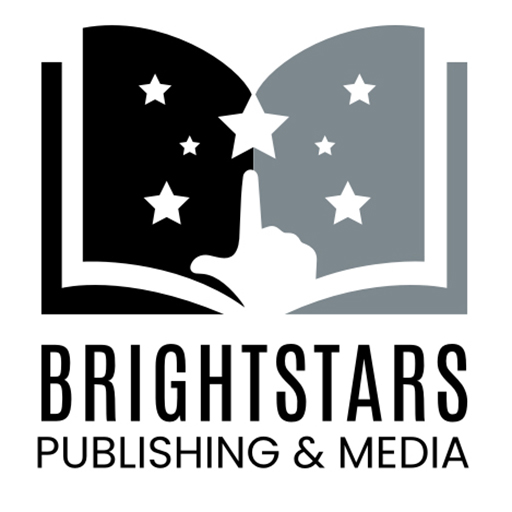Publishing through a Print-on-Demand (POD) service is one of the most decisive and meticulous stages in a book’s journey. It is the point at which the manuscript, the cover design, and the editorial vision must align with the technical and commercial requirements of global distribution.
To navigate this path successfully, authors and publishers need both a narrative understanding of what’s at stake and a clear roadmap of the concrete steps involved. At Brightstars, we like to describe it as opening the “technical dossier” of a book: once created, it will accompany that title for its entire commercial life.
Step 1: Opening the Project and Setting Metadata
The journey begins by creating a new project within the chosen POD platform—Amazon KDP, Lulu, Blurb, Lulu or others. This is where the book acquires its legal and technical identity.
Enter the book title, subtitle, and series (if applicable).
Identify all contributors: author, translator, illustrator, editor.
Add a compelling synopsis that will function as your book’s public presentation.
Provide copyright details, publishing imprint, and year of publication.
Select BISAC or BIC categories that define the genre and market niche.
Assign keywords (tags) that improve discoverability in searches and catalogs.
This stage is essentially about positioning: how the book will be cataloged and found by readers, retailers, and libraries worldwide.
Step 2: Deciding on the Physical and Technical Format
Before any file upload, the publisher must define the book’s physical identity. Each decision affects both production costs and market perception.
Choose the format: paperback, hardcover, eBook, or audiobook.
Select the trim size (e.g., 5×8, 6×9, A5).
Define the page count, which determines the spine width.
Pick print type: black & white standard, black & white premium, standard color, or premium color.
Choose interior paper (cream or white, various thicknesses).
Decide cover finish: matte or glossy.
Every one of these choices is strategic. They influence cost, aesthetics, and even how the book feels in a reader’s hands.
Step 3: Preparing and Uploading the Technical Files
With the specifications decided, the next step is to prepare the files that will become the published book. Precision is everything here.
Create the interior PDF with correct trim size, margins, bleed, and embedded fonts.
Ensure all images are 300 DPI, and export in CMYK for print.
Prepare the cover as a single PDF including front, back, and spine, following the platform’s template.
Calculate the spine width exactly, since it changes with page count.
Upload both files and verify they align with the chosen specs.
This is often the most technically challenging stage, where design and production intersect.
Step 4: Passing the Preflight Check
Once files are uploaded, the platform performs its automated preflight verification. This is a stress test for your files.
The system checks dimensions, margins, resolution, and fonts.
If errors are detected (RGB instead of CMYK, missing bleed, incorrect spine width), the file is rejected.
Revise, re-export, and upload again until the book passes inspection.
This iterative loop may feel tedious, but it is the safeguard that ensures professional quality.
Step 5: Reviewing the Proof Copy
Even after passing the digital checks, no book should go to market without a physical proof. The platform prints and delivers a single copy for author/editor review.
Inspect paper quality and ink contrast.
Verify font readability and margin consistency.
Check alignment of the spine and cover finish.
Compare the proof to the editorial vision: does it “feel” right?
Only once the proof is approved should the book be considered ready for final release.
Step 6: Defining Pricing and Royalties
With proof in hand, it’s time to define the economics. POD platforms calculate a base printing cost per copy, and from there, you set the retail price.
Review the platform’s cost and royalty calculator.
Balance accessibility (competitive price) with profitability (royalties).
Remember: each format (paperback, hardcover, eBook, audiobook) requires its own ISBN, its own price, and its own royalty structure.
In the U.S., this is often one of the trickiest steps, given the relatively high costs across formats.
Step 7: Launching the Book
Once price and royalties are defined, the book can officially be launched.
Select launch date and sales territories.
Approve distribution to global channels (Amazon, Apple Books, Google Play, libraries, bookstores).
Verify metadata is consistent across all platforms.
Announce the book through coordinated marketing campaigns.
At this point, the book enters the global publishing ecosystem, searchable in databases and available for order worldwide.
Practical Add-Ons
At Brightstars Publishing & Media, we believe no author should walk the publishing path alone. That’s why we offer a comprehensive service that unites technical precision with creative strategies, giving each book the impact and visibility it deserves.
Use professional mockups to promote the book visually before launch.
Optimize metadata with keywords tailored to your audience.
Ensure digital accessibility in eBooks (compatibility with screen readers, responsive layout).
Run early market tests: adjust categories, price, or description based on the first month’s performance.
In the end, uploading a book to a POD platform is not just a technical procedure. It is the moment when an idea matures into a market-ready product, carrying the identity of its author and publisher into the world.
Done with rigor and vision, it ensures the book begins its journey not as a fragile experiment, but as a professional creation, ready to find its readers.





